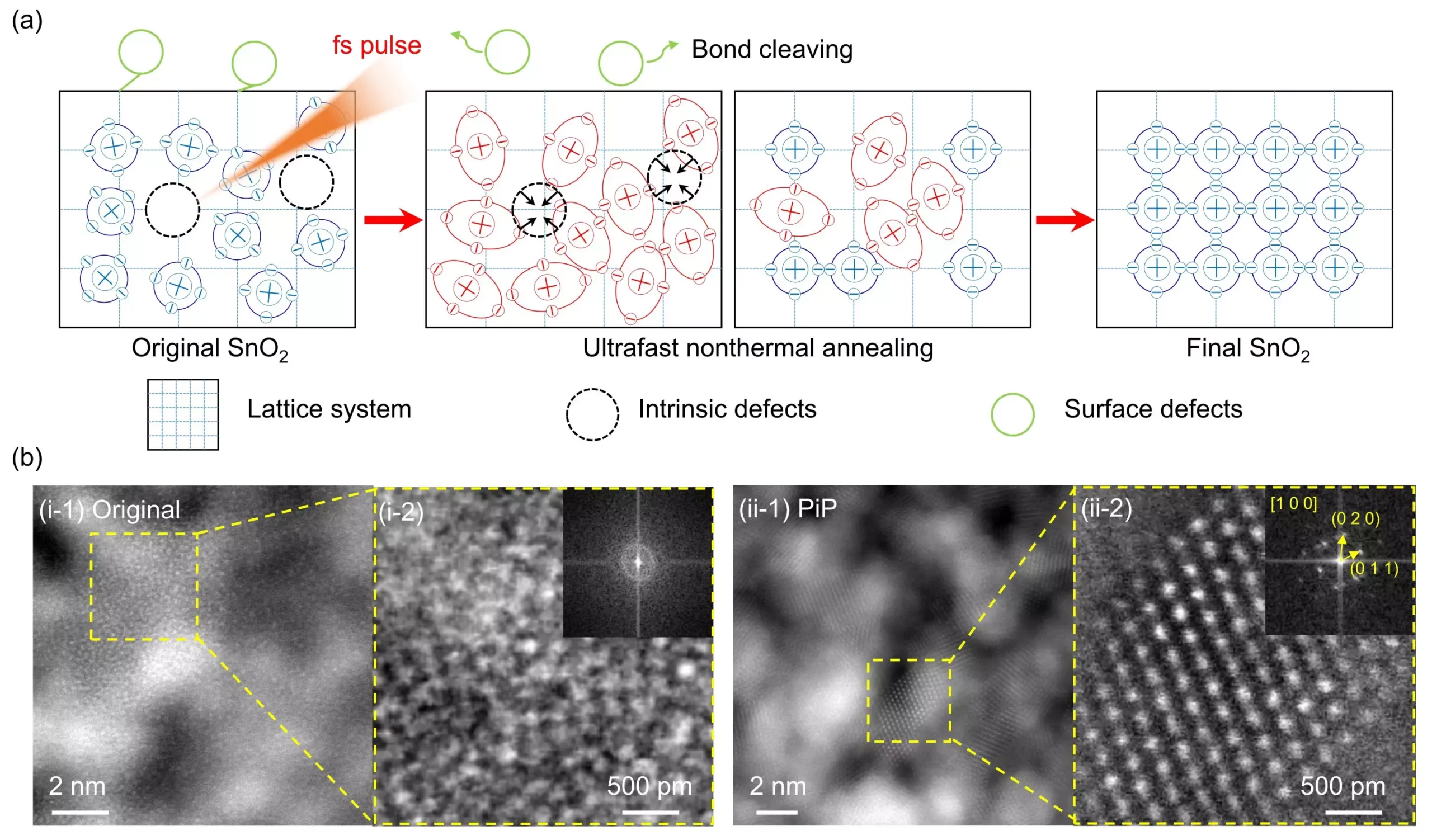Perovskite solar cells (PSCs) have shown great promise in revolutionizing the field of solar energy due to their high efficiency and low cost. One of the key components of PSCs is the electron transport layer (ETL), with SnO2 being widely utilized for its high transparency, electron mobility, and favorable band alignment. However, current methods of preparing SnO2 ETLs, particularly through chemical bath deposition (CBD), have shown limitations due to the generation of defects that lead to carrier recombination at the SnO2/perovskite interface.
Passivation of defects in SnO2 ETLs is crucial for enhancing the performance of PSCs. Traditional approaches such as thermal annealing and interface modification have been effective but are time-consuming, energy-intensive, and not suitable for flexible substrates. To address these challenges, researchers at the Center of Femtosecond Laser Manufacturing for Advanced Materials and Devices have developed a novel photoexcitation-induced passivation (PiP) strategy for SnO2 nanoparticle-based ETLs using a high-power femtosecond laser system.
The PiP process involves ultrafast intensive excitation induced by a femtosecond laser, leading to the transformation of SnO2 from the amorphous phase to the crystalline phase. This innovative technique improves the crystallinity of SnO2 and enhances defect passivation, as confirmed by high-resolution transmission electron microscope analyses. Additionally, the PiP process significantly reduces the treatment time, with the ability to anneal large samples in a matter of seconds, making it a more efficient alternative to conventional heating methods.
Researchers have demonstrated the effectiveness of the PiP technique in improving the performance of PSCs with different perovskite absorber layers. Two representative PSCs achieved impressive power conversion efficiencies (PCE) of 24.14% and 22.75%, respectively, showcasing the versatility of the PiP approach. Furthermore, the scalability of the technique was validated through the fabrication of perovskite solar modules with six subcells connected in series, achieving a PCE of 20.26%.
The success of the PiP technique in enhancing the efficiency and stability of PSCs paves the way for low-temperature manufacturing and commercialization of advanced solar technologies. Professor Xuewen Wang emphasizes the universal applicability and scalability of the PiP approach, highlighting its potential to revolutionize the production of PSCs and perovskite solar modules. As research in this field advances, further innovations in passivation techniques are expected to drive the development of next-generation solar technologies with improved performance and sustainability.
The development of novel passivation techniques such as PiP represents a significant milestone in the advancement of perovskite solar cells. By addressing critical challenges related to defect passivation and scalability, researchers are paving the way for the widespread adoption of PSCs as a viable renewable energy solution. The future of solar energy looks brighter than ever, thanks to innovative technologies that continue to push the boundaries of efficiency and sustainability.


Leave a Reply